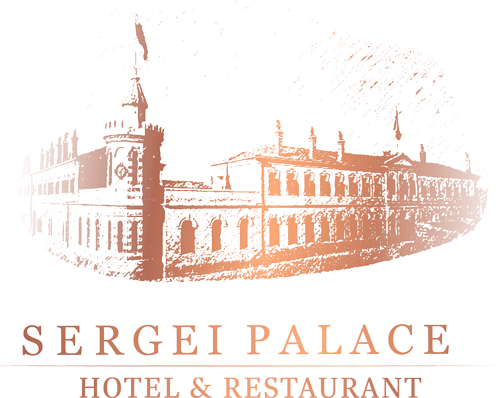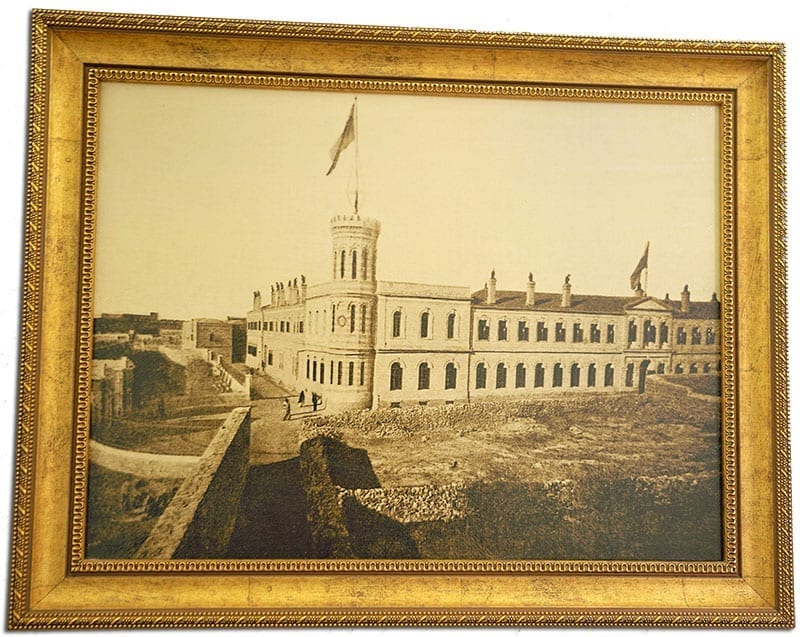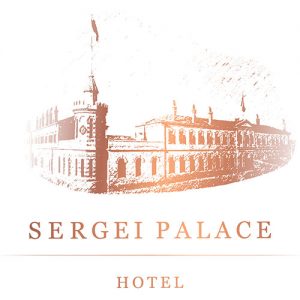n April 29, 1889 the birthday of the society Chairman Grand Duke Sergey Alexandrovich , the flag of Palestine Society was hoisted for the first time on the corner tower of Sergievsky Hospice.
Upon completion of construction works on October 20, 1889, Sergeivsky Hospice was consecrated by Chief of the Russian Ecclesiastical Mission, Archimandrite Antonine (Kapustin) and since that day started receiving pilgrims.
Located near Russian Buildings and connected to them through the entry gate, the hospice housed a large number of offices and services.
All pilgrims arriving at Jerusalem after 1892 would receive their luggage at the office through the railroad administration; they would deposit with the office their passports, pilgrims’ books and steamboat tickets on the security with 5 roubles paid back when they left Jerusalem.
Additionally, one rouble was paid for the benefit of the Russian Hospital to enable the pilgrims to use free medical service if necessary. Suitcases, chests and other heavy luggage were put for safekeeping in special storerooms that existed in all buildings of the Hospice’s complex.
The 1st and 2nd classrooms were furnished and equipped for long – term stay following the best European hotel standards of the day. The Compound was intended to accommodate and serve Russian Orthodox pilgrims who arrived in the Holy Land through the Imperial Orthodox Palestine Society and were used for their intended purpose until 1914.
At the courtyard, there was a tradition of “funeral dinners”, when wealthy pilgrims gave donations for the remembrance of the souls of their relatives, and free meals were distributed to poor pilgrims from these funds.



